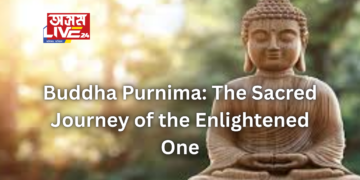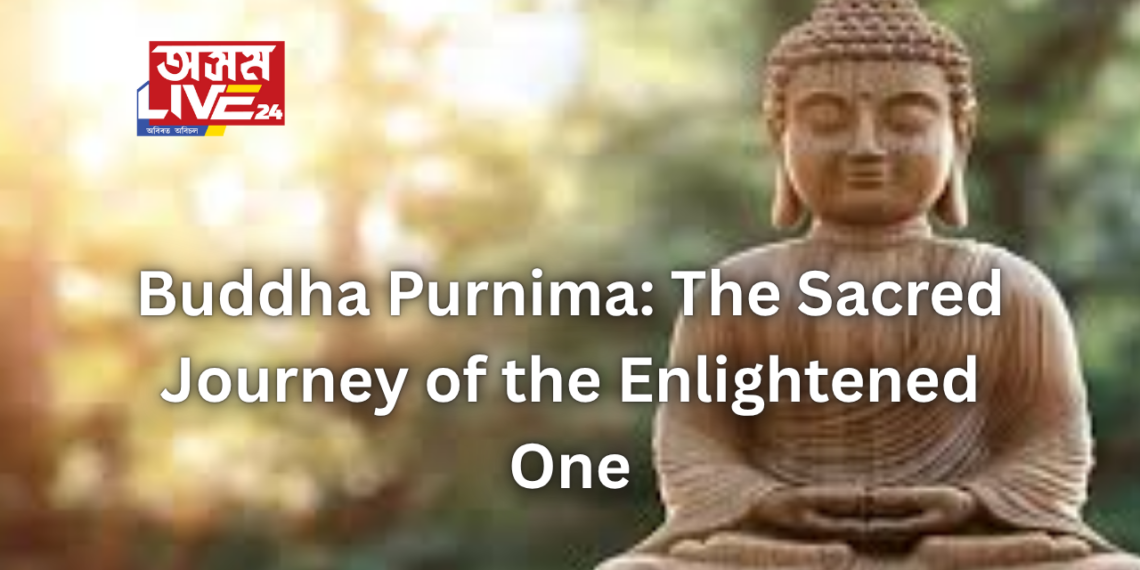Buddha Purnima, also known as Vesak, is the most sacred day in the Buddhist calendar. Celebrated with devotion and reverence by millions around the world, this day marks three pivotal events in the life of Gautama Buddha: his birth, his enlightenment, and his passing into Mahaparinirvana. All of these events are believed to have occurred on the same full moon day in the month of Vaisakha (April–May).
The Birth of a Prince with a Destiny
Around 563 BCE, a child named Siddhartha Gautama was born under a sal tree in Lumbini, present-day Nepal. He was the son of Queen Maya and King Suddhodana, rulers of the Shakya clan. From the very beginning, his birth was surrounded by miracles,legends say that he walked immediately after being born, and lotus flowers bloomed under his feet. Despite his royal upbringing, a greater destiny awaited him.
The Four Sights That Changed Everything
Siddhartha was raised in luxury and kept shielded from the harsh realities of life. But one day, he ventured outside the palace walls and encountered what are known as the Four Sights: an old man, a sick man, a dead body, and a wandering ascetic. These encounters profoundly shook him and led him to question the meaning of life, suffering, and death.
The Search for Truth
At the age of 29, Siddhartha renounced his royal life, leaving behind his family and riches to seek the truth. For years, he practiced extreme austerity and deep meditation, hoping to understand the root of human suffering. However, he soon realized that neither indulgence nor self-denial could bring true wisdom. This insight led him to discover the Middle Way—a balanced path of moderation and mindfulness.
Enlightenment Under the Bodhi Tree
At the age of 35, while meditating beneath the Bodhi tree in Bodh Gaya, India, Siddhartha overcame the final temptations of Mara, the demon of desire. That night, he attained nirvana—a state of perfect enlightenment. He became known as The Buddha, having discovered the Four Noble Truths and the Eightfold Path—core principles that form the heart of Buddhism.
The Final Journey
Buddha spent the next 45 years traveling, teaching, and spreading his message of compassion, mindfulness, and liberation. At the age of 80, he passed away in Kushinagar, India. His death, known as Mahaparinirvana, marked his release from the cycle of birth and rebirth (samsara), a state every Buddhist aspires to achieve.
How Is Buddha Purnima Celebrated Today?
On Buddha Purnima, devotees around the world come together to honor the Buddha’s life and teachings. They visit temples, offer prayers, and often bathe Buddha statues as a ritual of purification. People engage in meditation, listen to sermons, and reflect on the Buddha’s path. Acts of charity are also common—feeding the poor, donating to the needy, and even releasing birds or animals as a symbol of compassion. In many places, devotees wear white clothing to represent purity and simplicity.
A Day of Reflection and Peace
Buddha Purnima is more than a festival—it’s a powerful reminder of the potential for awakening within each of us. It encourages people of all backgrounds to practice kindness, mindfulness, and compassion in their daily lives. As we honor the Buddha’s journey, we’re also reminded of our own path toward peace and enlightenment
এনেধৰণৰ অন্যান্য বা-বাতৰিৰ বাবে লাইক কৰক অসম লাইভ ২৪ ৰ ফেচবুক পেজ




















